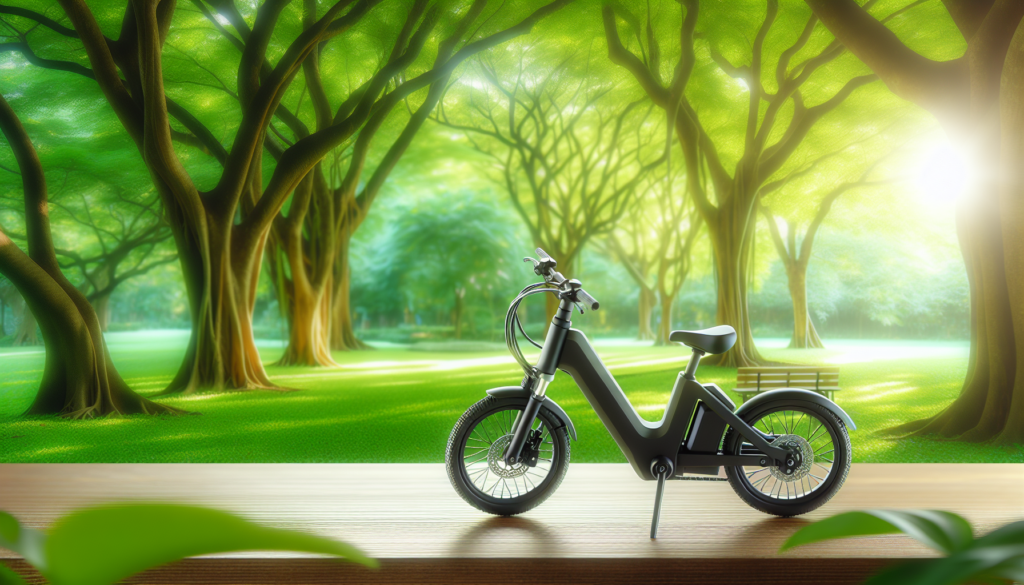
When it comes to choosing the perfect e-bike, understanding the differences between models is crucial for making an informed decision. In this showdown, we will compare the Xiaomi Ebike Himo Z20 and the ADO A20 Lite, two popular choices that cater to different rider preferences and needs. The Xiaomi Ebike boasts a dual electrical assist mode and a robust 36V 10Ah Li-ion battery, while the ADO A20 Lite from EKO Life MY stands out with its three electrical assist modes and lighter weight. With each model offering unique features, we’ll delve deeper into how these e-bikes differentiate themselves and help you decide which one suits your lifestyle best.
Overview of Xiaomi Ebike Himo Z20
The Xiaomi Ebike Himo Z20 is a versatile electric bike that features dual electrical assist modes, giving riders the flexibility to choose between Dynamic Sports Mode for an exhilarating ride or Cool Mode for a more leisurely experience. Powered by a 36V 10Ah Li-ion battery, the Himo Z20 provides a decent range of approximately 60km, making it suitable for both daily commutes and weekend adventures. With a maximum load capacity of 100kg and a weight of 21.6kg, this bike strikes a good balance between durability and ease of transport. The chain system and mechanical disc brakes ensure reliable performance, all packaged at a price point of RM 3,099.
In contrast, while the Xiaomi Ebike boasts some impressive features, the ADO A20 Lite offers a more lightweight design at just 16kg, contributing to enhanced maneuverability without sacrificing functionality. Also equipped with a robust 36V 9.6Ah Li-ion battery, this e-bike mirrors the Himo Z20’s range capabilities while featuring a belt system and mechanical disc brakes that may appeal to different riding preferences. Priced slightly higher at RM 3,699, the ADO A20 Lite caters to those who value lightweight design paired with a modern aesthetic, making it an attractive alternative in the e-bike market.
Introduction to ADO A20 Lite
The ADO A20 Lite is a remarkable addition to the world of e-bikes, showcasing advanced features that cater to various riding needs. With its three electrical assist modes, riders can easily switch between levels of assistance, ensuring a versatile and adaptable experience. It is equipped with a 36V 9.6Ah Li-ion battery, providing a range of up to 60km, perfect for commuters or weekend adventurers alike. Weighing only 16kg, the ADO A20 Lite is not only lightweight but also has a sturdy maximum load capacity of 100kg. It’s equipped with a belt system, offering a smoother and quieter ride compared to traditional chain systems, making it an appealing choice for those who value efficiency and comfort in their riding experience.
Price-wise, it is available for RM 3,699, which positions it as a premium offering in the market but justified by its features. With mechanical disc brakes, the ADO A20 Lite emphasizes safety and reliability, essential for urban riding. As riders explore the routes on this e-bike, the smooth operation and ease of handling become apparent, ensuring both advanced performance and a pleasurable riding experience.
Comparing this to its competitor, the Xiaomi Ebike Himo Z20, the ADO A20 Lite stands out with its cutting-edge design and intricate features, which makes it a worthy contender in the e-bike marketplace. Whether you are a leisure rider or someone looking for an efficient commuting solution, the ADO A20 Lite promises to meet and exceed expectations.
Comparative Analysis of Electrical Assist Modes
When it comes to electrical assist modes, the ADO A20 Lite offers a diverse experience with its three distinct settings, allowing riders to customize their journey based on terrain and personal preference. Each mode—ranging from eco-friendly to a more dynamic ride—ensures maximum efficiency and comfort, making every ride enjoyable, whether in the city or on a scenic country path. On the other hand, the Xiaomi Ebike Himo Z20 features dual electrical assist modes, including the Dynamic Sports Mode designed for thrilling performance, and the Cool Mode, which prioritizes a smooth and relaxed experience.
These modes cater to different riding styles, but the versatility of the ADO A20 Lite makes it stand out, especially for riders who relish the option to switch between modes frequently to adapt to changing conditions. With the ADO A20 Lite weighing in at just 16kg, it’s lighter than the Xiaomi Ebike Himo Z20, which weighs 21.6kg. The reduced weight of the ADO A20 Lite enhances its handling and maneuverability, appealing to those who often navigate through busy streets or prefer a nimble ride.
Both bikes are equipped with robust 36V batteries that provide an impressive range of about 60km. Those who prioritize ease of use may find the ADO A20 Lite more appealing, as its three assist modes allow for a tailored experience suited to varying requirements and cycling styles.
Battery Performance and Range: Xiaomi vs ADO
When comparing the battery performance and range of the Xiaomi Ebike Himo Z20 and the ADO A20 Lite, both e-bikes are quite impressive but have their unique advantages. The Xiaomi Ebike features a 36V 10Ah Li-ion battery, providing an impressive range of around 60 km. This solid battery configuration supports its dual electrical assist modes, allowing users to choose between Dynamic Sports Mode for a more thrilling ride or Cool Mode for a leisurely experience. With a max load capacity of 100 kg, the Xiaomi Himo Z20 is suitable for both urban commutes and leisurely rides, offering stability and performance during longer journeys.
Additionally, its 21.6 kg weight makes it manageable for daily use, giving riders the confidence to venture farther without worrying about battery life. On the other hand, the ADO A20 Lite also boasts a 36V system but with a slightly lower 9.6Ah capacity. Despite this, it still manages to provide an impressive range of approximately 60 km. The A20 Lite features three electrical assist modes, allowing riders to customize their experience based on preferences and terrain.
With a lightweight design of just 16 kg, the ADO A20 Lite is highly maneuverable and ideal for those seeking a more agile e-bike. The belt system used in the ADO model also contributes to smoother rides and lower maintenance, making it an attractive choice for daily urban commuters. Both e-bikes offer reliable performance, but the ADO A20 Lite stands out for those who prioritize weight and flexibility in their ride.
Weight and Load Capacity: Which Bike Wins?

When it comes to weight and load capacity, the ADO A20 Lite and Xiaomi Ebike Himo Z20 present different merits that cater to distinct user preferences. The Xiaomi Ebike Himo Z20 weighs in at 21.6kg, slightly heavier than its counterpart, but offers a sturdy design that allows for a maximum load of 100kg. This could be ideal for riders who might carry additional gear or passenger weight. The robust chain system coupled with mechanical disc brakes ensures reliability across various terrains.
In contrast, the ADO A20 Lite is a more lightweight option at 16kg, making it easier to handle, particularly for those who may need to transport their bike frequently. It also boasts the same maximum load capacity of 100kg, perfect for commuters or leisure riders looking for versatility in their electric bike experience. The significance of weight is crucial, especially when considering ease of storage and transportation.
The ADO A20 Lite‘s lighter design is beneficial for urban environments where riders might need to lift their bike onto public transport or navigate through busy streets. Moreover, its belt system can offer smoother riding and reduced maintenance compared to chain systems. Ultimately, the choice between the two bikes will depend on individual needs, whether prioritizing stability and durability with the Xiaomi Ebike or the convenience and portability found in the ADO A20 Lite.
Construction: Chain System vs Belt System
When comparing the construction of the Xiaomi Ebike Himo Z20 and the ADO A20 Lite, one notable distinction is the type of propulsion system each bike employs. The Xiaomi Ebike utilizes a chain system, which has been a traditional choice for many bicycles due to its reliability and ease of repair. This system generally provides a robust connection between the pedals and the rear wheel, allowing for efficient power transfer. However, the chain can require more maintenance over time, especially in terms of lubrication and wear.
On the other hand, the ADO A20 Lite opts for a belt system, which offers a quieter and smoother ride with less maintenance required. The belt system is less prone to stretching or rusting, contributing to its longer lifespan and cleaner operation. This makes the ADO A20 Lite an attractive option for those seeking a low-maintenance e-bike experience. In terms of weight, the ADO A20 Lite is notably lighter at 16kg compared to the 21.6kg of the Xiaomi Ebike, making it easier to handle and maneuver, especially in urban settings.
Despite both bikes supporting a maximum load of 100kg and offering an impressive range of approximately 60km, the choice between them may come down to personal preference regarding the construction. If you value a traditional and dependable chain system, the Xiaomi Ebike is a solid choice. Conversely, if you’re looking for a lightweight bike with a modern belt system that requires less upkeep, the ADO A20 Lite stands out as the preferable option.
Braking Systems: Mechanical Disc Comparison
When it comes to braking systems, both the Xiaomi Ebike Himo Z20 and the ADO A20 Lite are equipped with mechanical disc brakes that provide reliable stopping power. The mechanical disc brakes on the Xiaomi Ebike offer a significant advantage in varied weather conditions, delivering consistent performance while ensuring rider safety. This feature is particularly beneficial for urban commuters who navigate through city traffic and occasional slippery surfaces. With a max load capacity of 100kg and a weight of 21.6kg, the Himo Z20’s sturdy build complements its braking system, allowing for assured stops even with heavier payloads.
In contrast, the ADO A20 Lite features a lighter design at only 16kg, making it an agile choice for those seeking a nimble e-bike experience. Despite its lighter weight, it too boasts mechanical disc brakes, ensuring effective braking under various conditions. This bike excels in maneuverability, ideal for city rides or quick errands. The addition of three electrical assist modes enhances its versatility, making it a compelling option for riders who want to customize their experience. The choice between these two e-bikes ultimately depends on individual preferences, but the ADO A20 Lite certainly stands out as a strong contender for those valuing weight and agility.
Pricing Strategy: Value for Money between Xiaomi and ADO
When it comes to pricing strategy, both the Xiaomi Ebike Himo Z20 and the ADO A20 Lite present unique value propositions for potential buyers. The Xiaomi Ebike Himo Z20 is priced at RM 3,099, which is quite competitive given its dual electrical assist modes and robust features like the 36V 10Ah Li-ion battery that offers a range of about 60km. Weighing in at 21.6kg, this bike supports a maximum load of 100kg and incorporates a reliable chain system along with mechanical disc brakes, making it a practical choice for many commuters seeking efficiency and functionality without breaking the bank.
On the other hand, the ADO A20 Lite, although more expensive at RM 3,699, offers a lighter frame at just 16kg, which can appeal greatly to those prioritizing portability and ease of handling. The three electrical assist modes provide users with more customization options to enhance their riding experience, while the belt system ensures a smoother ride and lower maintenance requirements. With similar range capabilities of around 60km and a maximum load of 100kg, the ADO A20 Lite still stands strong in the competitive e-bike market, making it an attractive choice despite the higher price tag.
Choosing the Right E-Bike for Your Needs

In conclusion, both the Xiaomi Ebike Himo Z20 and the ADO A20 Lite offer impressive features tailored to different preferences and riding styles. The Xiaomi Ebike boasts a dual electrical assist mode, making it fantastic for those who appreciate versatility in their rides.
Its robust design, with a weight of 21.6 kg and a price point of RM 3,099, makes it a solid choice for individuals looking for a reliable, feature-rich e-bike with a range of about 60 km. However, for those who seek a lighter option, the ADO A20 Lite stands out with its featherweight of just 16 kg and a competitive price of RM 3,699, coupled with three electrical assist modes that enhance ease of use and comfort during commutes.
Ultimately, your choice may depend on specific needs—if you value a dynamic sports riding experience, the Xiaomi Ebike could be your best bet. However, if portability and adaptability are your priorities, the ADO A20 Lite is an excellent option. Whichever e-bike you choose, both models are designed to elevate your commuting experience while ensuring a fun and efficient journey.

Need more info about the blog post to understand its topic
Hi Nuraisyah, thank you for visiting our blog. To clarify, the blog is about ‘Eko Life Malaysia’ and their mission to empower bicycle, ebike, and escooter enthusiasts through affordability, quality products, professional servicing, and community building. If you’d like to know more, please don’t hesitate to reach out to us at [email protected] or call us at +60 3-7890 3042. We’re here to help. We’d also be happy to answer any specific questions you may have.
The title seems intriguing but the summary is way too short
Thank you for sharing your thoughts, Hee Shang Wong! We appreciate your honest feedback. Our goal is to provide a brief yet engaging summary to entice readers to dive into the full content. We’ll take your comment into consideration for future improvements.
I’d love to know what inspired the writer to create this post
Hello Kailash, thank you for taking the time to read and comment on our blog post. Unfortunately, it seems we don’t have any information available regarding the inspiration behind this specific post. However, our aim at Eko Life Malaysia is to empower bicycle, ebike, and escooter enthusiasts by providing affordable, quality products, professional servicing, and forging strong community connections. If you’d like to know more about our company, please don’t hesitate to reach out to us via [email protected] or +60 3-7890 3042. We’d be more than happy to have a conversation with you.